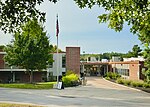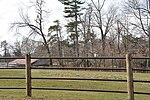Fruitlands (transcendental center)

Fruitlands was a utopian agrarian commune established in Harvard, Massachusetts, by Amos Bronson Alcott and Charles Lane in the 1840s, based on transcendentalist principles. An account of its less-than-successful activities can be found in Transcendental Wild Oats by Alcott's daughter Louisa May Alcott.Lane purchased what was known as the Wyman farm and its 90 acres (36 ha), which also included a dilapidated house and barn. Residents of Fruitlands ate no animal substances, drank only water, bathed in unheated water and "no artificial light would prolong dark hours or cost them the brightness of morning." Additionally, property was held communally, and no animal labor was used. The community was short-lived and lasted only seven months. It was dependent on farming, which turned out to be too difficult. The original farmhouse, along with other historic buildings from the area, is now a part of Fruitlands Museum.
Excerpt from the Wikipedia article Fruitlands (transcendental center) (License: CC BY-SA 3.0, Authors, Images).Fruitlands (transcendental center)
Prospect Hill Road,
Geographical coordinates (GPS) Address Phone number Website Nearby Places Show on map
Geographical coordinates (GPS)
| Latitude | Longitude |
|---|---|
| N 42.509444444444 ° | E -71.6125 ° |
Address
Fruitlands Museum
Prospect Hill Road 102
01467
Massachusetts, United States
Open on Google Maps











